Title : Surgical site infection pre and post COVID- 19 related hygiene protocols in gynaecological oncology: Is there a difference in prevalence and severity at Charlotte Maxeke Johannesburg Academic Hospital?
Abstract:
Introduction: Surgical site infection is common in gynaecological oncology surgery worldwide. It constitutes a burden to patients and to the healthcare system. The COVID-19 pandemic resulted in a lockdown across the globe to minimise human contact, therefore curbing the spread of the disease. Furthermore, drastic measures regarding hygiene in medical settings, particularly in operating theatres, were implemented to prevent the transmission of the virus between patients and healthcare professionals.
Objectives: This study was designed to describe the impact of COVID-19-related hygiene measures on the occurrence of surgical site infection at Charlotte Maxeke Johannesburg Academic Hospital. We hypothesised that there would be a reduction in the incidence of surgical site infection due to compliance with hygienic practices.
Methods: This was a single-centre retrospective study of participants who had elective surgery for pre-malignant lesions, malignancies, or suspected malignant conditions from 1 September 2018 to 29 February 2020 (pre-COVID group), and from 1 March 2020 to 31 December 2021 (COVID group). A descriptive analysis was conducted using Stata 15.0. Surgical site infection rates, relook laparotomy, delay in adjuvant therapy, length of hospital stay, and mortality were compared using Chi-squared and Fischer’s tests.
Results: We included 511 participants with 296 (57.9%) being in the pre-COVID group, and 215 (42.1%) in the COVID group. There was no significant difference in the occurrence of surgical site infection. However, there was significantly prolonged hospitalisation in the COVID group (p<0.001).
Conclusion: As the occurrence of surgical site infection in the pre-COVID and COVID group is almost similar and comparable, we may confidently conclude that healthcare professionals played a minimal role in the incidence of surgical site infection as hypothesised in many pre-COVID studies.



